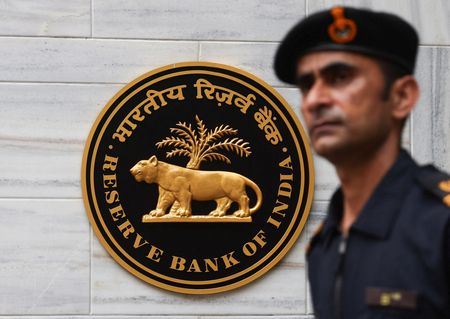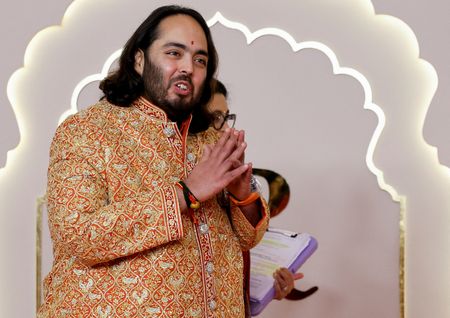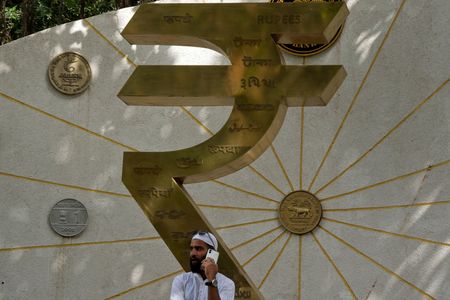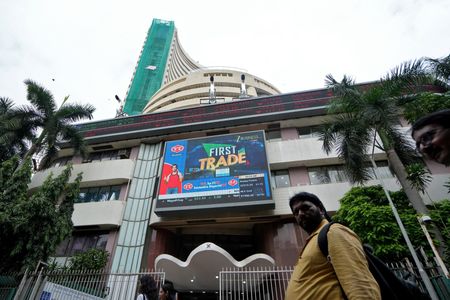By Swati Bhat and Dharamraj Dhutia
MUMBAI (Reuters) -Indian bond traders are calling for central bank intervention as a sharp drop in institutional buying has pushed yields higher, threatening to stall monetary transmission, market participants said on Tuesday.
The benchmark 10-year bond yield has jumped 24 basis points to 6.62% in August, including a 22-bp surge over the last seven sessions through Tuesday, after Prime Minister Narendra Modi announced tax cuts plans on goods and services.
Alongside fiscal concerns, pension funds and insurers have shunned bonds in favour of equities, while large banks have slowed purchases amid mark-to-market losses on existing bond holdings as yields spiked.
This has led to a “buyers strike” in the market, pushing benchmark yields above key technical levels, traders said.
The yield spike has also forced firms, including HUDCO and Bajaj Finance, to withdraw planned fundraising.
“Investors are on the sidelines and with every piece of news, short sellers are getting active, which has led to all key levels being broken,” said VRC Reddy, treasury head at Karur Vysya Bank.
“The Reserve Bank of India should communicate with the market, while the government needs to step in with fiscal assurance to stop the current rise in bond yields,” he added.
The rise in yields since the central bank’s policy decision on August 6, has offset the declines seen earlier in the financial year, reversing the impact of 100 bps of RBI rate cuts since February.
“The recent selloff in bond market has seen yields move back to levels seen at start of fiscal year,” said A. Prasanna, economist at ICICI Securities Primary Dealership. He added that this could weigh on corporate bond borrowing, which had jumped earlier this year.
“The RBI should be concerned that benefits of rate cuts and liquidity infusion may take longer than usual to percolate into the economy, given that bank credit growth is also tepid,” Prasanna said.
DEMAND DROPS; SUPPLY REMAINS
Market participants say structural changes are compounding the pressure on bond yields.
Restrictions on banks’ use of the held-to-maturity (HTM) portfolio have curbed their ability to book profits, forcing them to step up trading activity.
Demand for longer duration bonds from insurers and pension funds has also slowed, with inflows into private insurers tapering and the National Pension System allocating more funds to equities.
Meanwhile, both central and state governments have ramped up borrowing via long-term bonds, worsening the mismatch.
Traders say even token open market bond purchases by the RBI could help shift sentiment and stabilise yields.
Bonds worth over 2.6 trillion rupees ($29.71 billion) are due to mature in the current fiscal year, of which the central bank holds around 750 billion rupees. The RBI could swap them for 5-10-year maturity bonds to help banks tide over the current deadlock, several traders said.
“Investors had built long positions to play the easing cycle. The bulk of the easing happened in a short period of time and the cycle ended too quickly for investors to adjust their positions,” a senior trader at an insurance firm said.
“The market didn’t get an opportunity to time-correct and we are, therefore, seeing a price correction.”
($1 = 87.72 Indian rupees)
(Reporting by Swati Bhat and Dharamraj Dhutia; Editing by Sonia Cheema)










